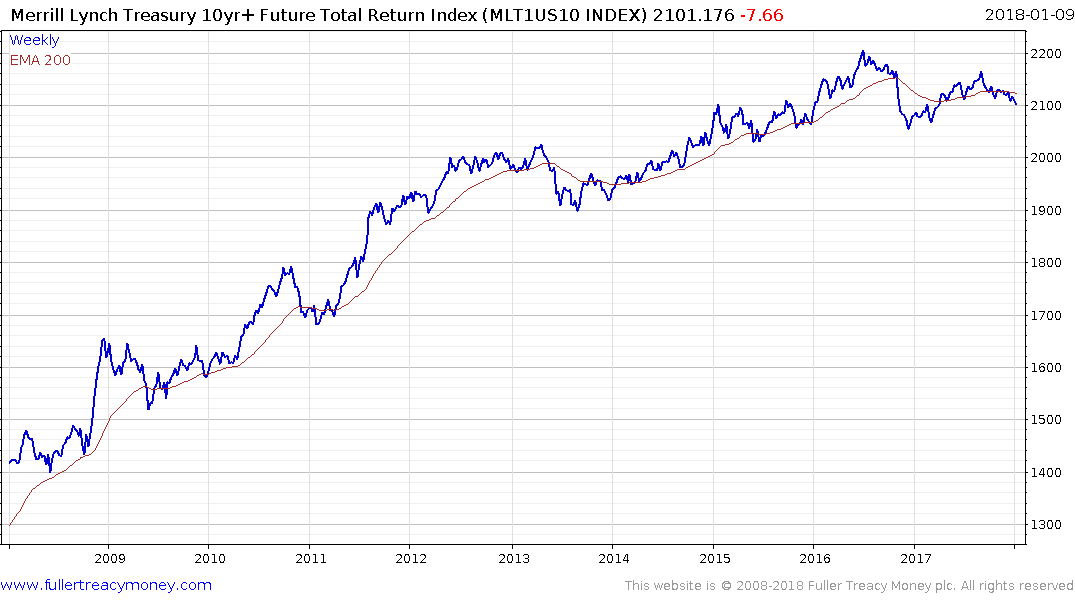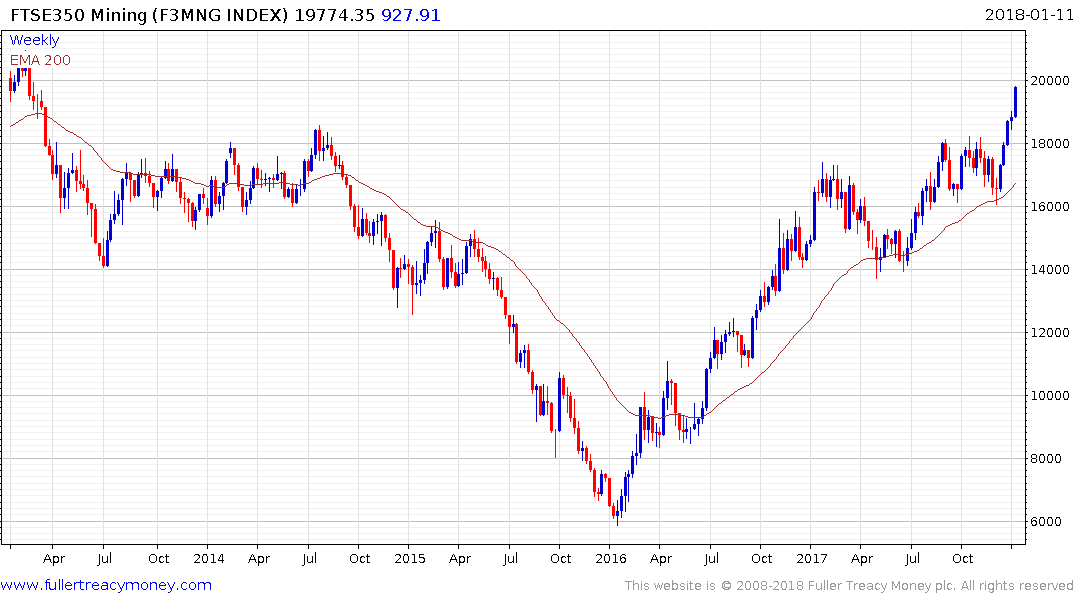Just Markets
It was a pleasure to tune in to this conference call with Jeff Gundlach at DoubleLine and the firm kindly sent along the slides.
Here is a link to the slide packet.
The primary message from this webcast is that a lot of good news is already in the price and the biggest surprise on the horizon is likely to be on the downside.
Veteran subscribers will be familiar with my refrain that we are now in the third psychological perception stage of the medium-term bull market which often climaxes in acceleration. There are nascent signs of acceleration particularly on Wall Street but other than that there are no signs just yet of an impending top.
Nevertheless, it would be remiss of me not to remain vigilant for what that top is eventually going to look like. Central banks birthed this long-running bull market with the invention of quantitative easing and the proposed shrinking of their balance sheets represents a significant challenge to liquidity fuelled trends.
Stock markets are still pricing in the benefits to corporate balance sheets of the US tax cuts while Europe, Japan and China are all posting robust growth figures. The recovery in commodity prices, particularly oil, is aiding related markets and that is being reflected in the commonality of stock market indices breaking on the upside or extending uptrends.

However, there is now also a great deal of commonality in sovereign bond markets where yields are testing key areas of resistance. The Merrill Lynch 10-year US Treasury Futures Total Return Index has developing Type-3 trend ending characteristics. If central banks persist in raising rates while simultaneously reducing the size of their balance sheets it will result in the removal of the punchbowl that has resulted in most market tops historically.

There are two conclusions to be drawn from this condition. Resources shares tend to outperform into the latter stages of a bull market, just like they did in 2007 and 2008. The other big point is this is an especially important time to pay attention to trend inconsistencies.


